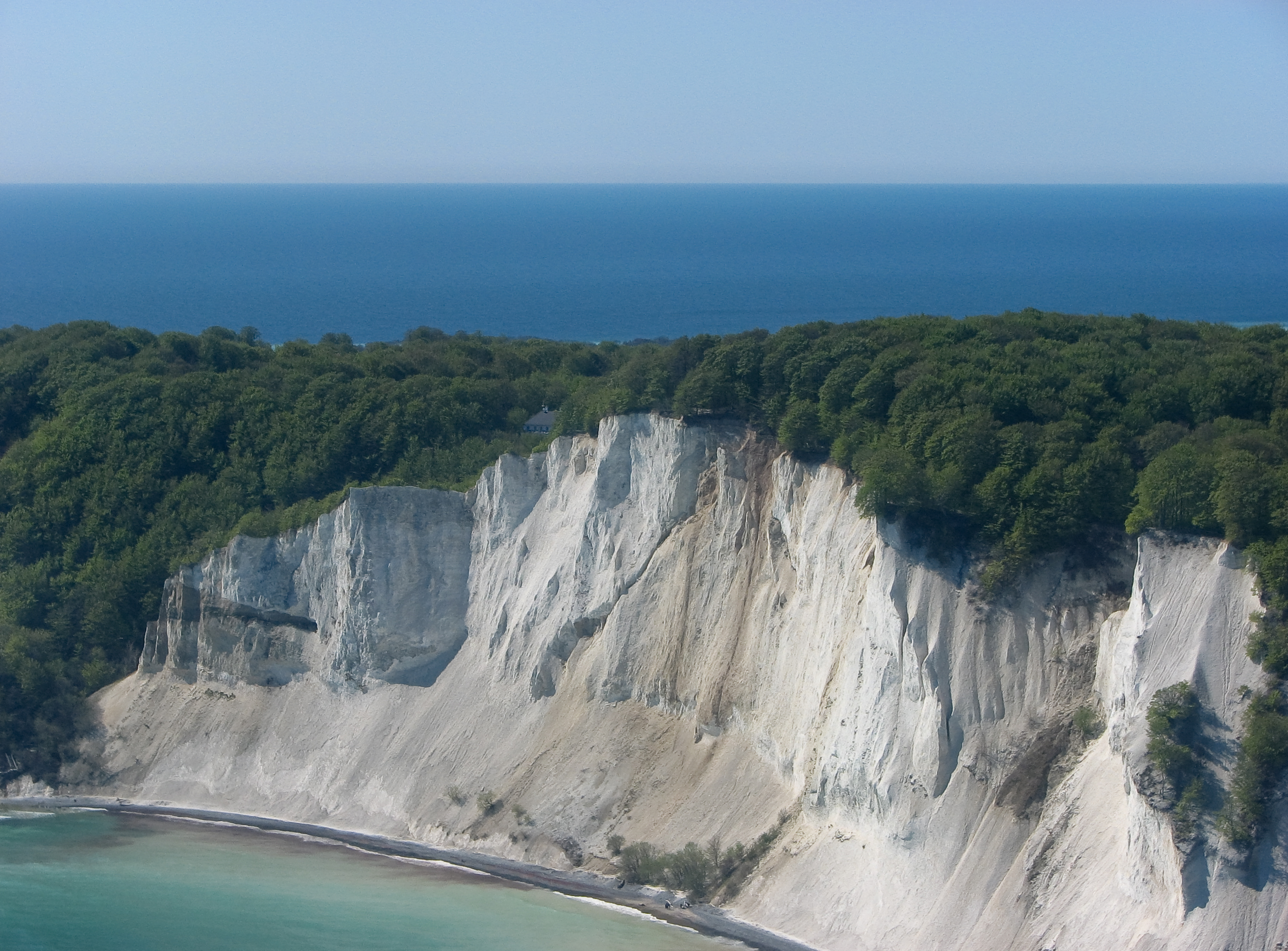GeoCenter Møns Klint on:
[Wikipedia]
[Google]
[Amazon]
 GeoCenter Møns Klint is a geological museum on the island of
GeoCenter Møns Klint is a geological museum on the island of
, retrieved 2009-10-10
 Considered by the
Considered by the
"Stor guide: 50 fede oplevelser med børn i påsken"
''Politiken.dk'', 15 April 2011. Retrieved 1 May 2011.
File:GeoCenter2.JPG, Ground floor with shop
File:GeoCenter3.JPG,
Official website
{{DEFAULTSORT:GeoCenter Mons Klint Møn Museums in Region Zealand Geology museums in Denmark Museums established in 2007
Møn
Møn () is an island in south-eastern Denmark. Until 1 January 2007, it was a municipality in its own right but it is now part of the municipality of Vordingborg, after merging with the former municipalities of Langebæk, Præstø, and Vordingbo ...
in southeastern Denmark
)
, song = ( en, "King Christian stood by the lofty mast")
, song_type = National and royal anthem
, image_map = EU-Denmark.svg
, map_caption =
, subdivision_type = Sovereign state
, subdivision_name = Danish Realm, Kingdom of Denmark
...
. Located close to the top of the chalk cliffs known as Møns Klint
Møns Klint is a 6 km stretch of limestone and chalk cliffs along the eastern coast of the Danish island of Møn in the Baltic Sea. Some of the cliffs fall a sheer 120 m to the sea below. The highest cliff is , which is 128 m above sea lev ...
, it was opened on 29 May 2007 by Queen Margrethe. The building was designed by PLH Architects PLH Architects is an architectural firm based in Copenhagen, Denmark. It was founded in 1977 by Palle Leif Hansen.
Location
PLH Arkitekter is based in a former industrial complex situated in the Haraldsgade neighbourhood on the border between outer ...
, the winners of an international design competition
A design competition or design contest is a competition in which an entity solicits design proposals from the public for a specified purpose.
Architecture
An architectural design competition solicits architects to submit design proposals for a b ...
.Interview with Søren Mølbak, Architect, retrieved 2009-10-10
Design
 Considered by the
Considered by the World Architecture Festival
The World Architecture Festival (WAF) is an annual festival and awards ceremony, one of the most prestigious events dedicated to the architecture and development industry. The first four events were held in Barcelona, from 2008 to 2011, at which p ...
to be one of the world's most beautiful buildings, most of the structure is underground. The architects chose to safeguard nature by reducing the visible above-ground part of the building to a minimum. The large exhibition area, entirely underground, falls in line with the centre’s objective which is to tell the story of what lies beneath Denmark. The curvature of the building was the result of a desire to preserve the trees lining the cliff. The centre's architect, Søren Mølbak, explains: "Because the cliffs are white and we wanted to follow nature, our choice of materials and colours is based on the natural environment. But we didn’t want to paint the walls white, so the building is made of white concrete, the floors are white cement plaster, the indoor walls are white rendered plasterboard, and the ceilings are white Mono acoustic spray-rendered ceilings." The white ceilings in the restaurant are free of directional lines, following the curvature of the building, and have randomly placed light fixtures. Those in the underground exhibition centre are black. The outer wall adjacent to the parking lot is lined with untreated planks of larch wood, blending into the surroundings.
The exhibition
The exhibition traces Denmark's birth from prehistoric times 70 million years ago. Around the main exhibition hall, there are a number of large cave-like booths where artists express their views of the story. Visitors can walk through the gallery experiencing the different geological levels passing through theCretaceous Period
The Cretaceous ( ) is a geological period that lasted from about 145 to 66 million years ago (Mya). It is the third and final period of the Mesozoic Era, as well as the longest. At around 79 million years, it is the longest geological period of t ...
with sharks, sea urchins and the mosasaur
Mosasaurs (from Latin ''Mosa'' meaning the 'Meuse', and Greek ' meaning 'lizard') comprise a group of extinct, large marine reptiles from the Late Cretaceous. Their first fossil remains were discovered in a limestone quarry at Maastricht on th ...
, Tertiary Period
Tertiary ( ) is a widely used but obsolete term for the geologic period from 66 million to 2.6 million years ago.
The period began with the demise of the non-avian dinosaurs in the Cretaceous–Paleogene extinction event, at the start ...
when the chalky seabed was freed from the sea; and the Quaternary Period
The Quaternary ( ) is the current and most recent of the three period (geology), periods of the Cenozoic era (geology), Era in the geologic time scale of the International Commission on Stratigraphy (ICS). It follows the Neogene Period and spa ...
when glaciers subsided over Denmark.
In addition to interactive computer screens, the exhibition gallery has many attractions for children including treasure hunts, competitions and a 3D film.''Politiken.dk'', 15 April 2011. Retrieved 1 May 2011.
Gallery
Mosasaur
Mosasaurs (from Latin ''Mosa'' meaning the 'Meuse', and Greek ' meaning 'lizard') comprise a group of extinct, large marine reptiles from the Late Cretaceous. Their first fossil remains were discovered in a limestone quarry at Maastricht on th ...
model suspended from exhibition gallery ceiling
File:GeoCenter5.JPG, Show case in the underground exhibition centre
File:GeoCenter4.JPG, Upper floor section of the exhibition centre
See also
* Skagen Odde Nature CentreReferences
External links
Official website
{{DEFAULTSORT:GeoCenter Mons Klint Møn Museums in Region Zealand Geology museums in Denmark Museums established in 2007